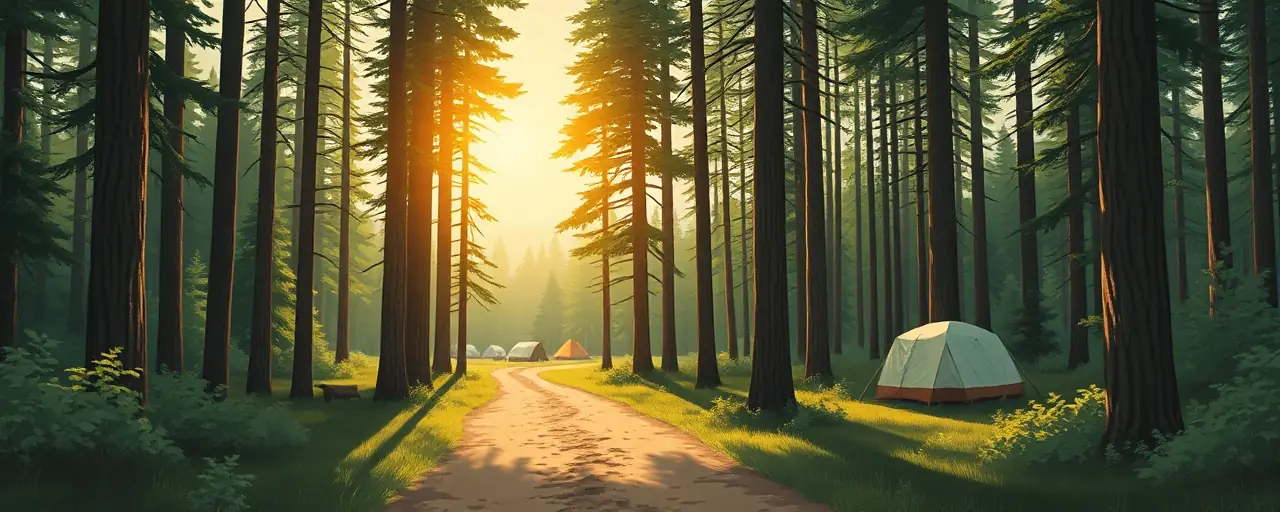A Call to the Outdoors
New York’s sprawling forests, shimmering lakes, and rugged trails are calling. The state’s 119 public campgrounds, from the Adirondacks to the Finger Lakes, are now accepting reservations for the 2025 season, with most sites opening by May 16. Whether it’s a secluded tent pitch or a cozy waterfront cottage, these destinations promise a chance to disconnect from daily life and reconnect with nature. For many, it’s a ritual that feels both timeless and urgently needed.
The announcement, made by state officials, highlights camping as a way to restore balance in a fast-paced world. With bookings available up to nine months in advance through an online platform, planning a trip has never been easier. Yet, behind the serene imagery of campfires and starry skies lies a broader story: one of economic impact, evolving access, and the challenges of meeting growing demand for outdoor recreation.
Nature’s Economic Engine
State campgrounds do more than offer a place to pitch a tent; they fuel local economies. Outdoor recreation in the U.S. generated $1.2 trillion in 2023, supporting 5 million jobs and outpacing sectors like farming and mining. In New York, visitor spending at state parks and campgrounds ripples through nearby towns, boosting restaurants, outfitters, and lodging. For every dollar invested in state parks, economic returns can reach as high as $38, a figure that underscores their role in sustaining small businesses and generating tax revenue.
Nationwide, similar trends hold. National parks saw 325.5 million visitors in 2023, whose spending supported over 415,000 jobs. In states like Minnesota and Virginia, park visitors contribute hundreds of millions annually to local economies. New York’s campgrounds, spread across regions like the Catskills and Thousand Islands, are vital cogs in this machine, drawing both in-state campers and out-of-state tourists eager to explore the state’s diverse landscapes.
Access for All?
While the allure of camping is universal, access to it is not. Across the U.S., communities of color and low-income neighborhoods often have less park space, with 44% less acreage on average than predominantly white areas. In New York, efforts to close this gap are underway, but challenges persist. Historical policies, including redlining and underinvestment, have left lasting disparities in park quality and proximity, particularly in urban areas.
State officials are promoting initiatives to make campgrounds more inclusive. The 2025 New York Camping Guide, available online and in print, details amenities and accessibility features, such as ADA-compliant facilities. Programs like the Loyalty Program, which rewards campers with points for future stays, aim to encourage repeat visits. Still, advocates argue that more needs to be done, from expanding transportation options to campgrounds to offering subsidized rates for low-income families, to ensure everyone can experience the benefits of nature.
Technology’s Role in the Wilderness
Booking a campsite in New York is now as simple as a few clicks. The state’s reservation system, managed through an online platform, allows users to secure spots up to nine months in advance, with real-time availability and detailed site descriptions. This technological leap has made planning easier, but it also reflects a broader trend: digital tools are reshaping how people interact with public lands.
Nationwide, park systems are integrating AI and mobile apps to enhance visitor experiences. In Colorado, apps connect visually impaired visitors to live guides for navigation. Yet, technology isn’t a cure-all. Rural campgrounds often lack reliable cell service, and not all users are tech-savvy. Balancing these advancements with equitable access remains a priority, as officials work to ensure that digital systems don’t inadvertently exclude those less familiar with online platforms.
Balancing Demand and Preservation
The surge in outdoor recreation, with 175.8 million Americans participating in 2023, has brought both opportunities and strains. New York’s campgrounds, especially popular sites like Hither Hills, often book up quickly during peak summer months. This high demand highlights the need for careful management to prevent overcrowding and environmental degradation.
State officials are investing in infrastructure to meet this demand, with plans to renovate recreational facilities and expand access to swimming and playground areas. At the same time, some voices emphasize the importance of preserving the natural experience, limiting commercialization, and maintaining the quiet solitude that draws campers in the first place. Finding this balance is a delicate task, as the state navigates growing interest in its outdoor spaces.
Looking Ahead
New York’s campgrounds are more than just places to sleep under the stars; they’re gateways to economic vitality, personal well-being, and environmental connection. As the 2025 season approaches, the state is poised to welcome campers from all walks of life, offering a chance to unplug and recharge in some of the country’s most stunning landscapes.
Yet, the path forward requires addressing inequities, embracing technology thoughtfully, and managing the pressures of rising demand. For New Yorkers and visitors alike, the promise of a night in the great outdoors remains a powerful draw, one that carries the potential to strengthen communities and preserve natural treasures for generations to come.
